1930s London-South Wales Coach
1930s London-South Wales Coach
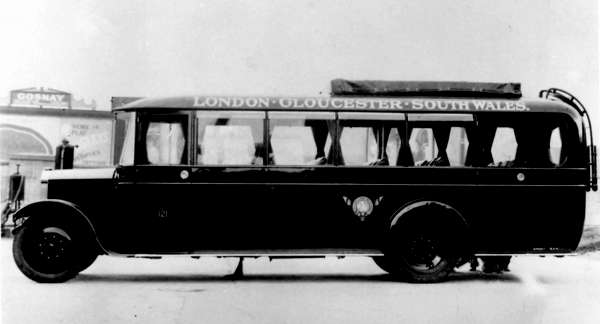
Can anyone identify this coach? PSV Circle photo archive have it as Red & White fleet 121 with no other details. I have identified the location as outside Strachans factory where many of their new vehicles were photographed so presumably it has Strachans bodywork. Does it look like a Gilford? I have been unable to identify the fleet logo on the side which I have not seen before. It seems to be a garter and buckle with "wings". It is not the early Red & White garter and buckle device. Possibly it may belong to one of the companies taken over by R&W but which one and if the vehicle was photographed when new why would it have a R&W fleet no. Curiously I have a blank for 121 in my list of R&W fleet numbers. As far as I know R&W did not have any Gilford/Strachans coaches.
Richard Smith
If you would like to comment on the above please click here
06/08/14 - 09:16
In the 'Associated Motorways' Prestige series book by Keith Healey (page 8) the following companies are mentioned as operating London-South Wales routes:
Great Western Express*
Cooks Safety Coaches
Fishers of Newport
South Wales Express*
Cliffs Coaches*
Queens Line
Red and Black (E Gray and Sons)
Red Bus Service*
Westcliffe on Sea Motor Services
plus Black & White and Red & White of course.
Those marked * were taken over by Red & White (some purchased jointly by Red & White with Black & White)
It mentions Red & White working in conjunction with Rural England Motor Services on the 'original London route' but, following a disagreement between the two companies, Red & White set up a new arrangement with Blue Star Coaches.
David Slater
06/08/14 - 11:11
In another book I have entitled 'Kaleidoscope of Char-a-bancs and Coaches' by Stan Lockwood (1980) there is a photograph of a Strachan & Brown bodied Studebaker coach with lettering along the side panels in a typeface not unlike that in the above featured photograph which reads 'Daily service London, Oxford, Gloucester'.
The caption reads 'Rural England was started in December 1928 by two former London 'pirate' busmen, George Finlay and Edward Holland. When J H Watts' more powerful Red & White began express services in April 1929 they met Rural England at Gloucester and also painted their express service vehicles in Rural England livery. In 1929 J H Watts began operating his own services and Rural England were out on a limb and began operating to South Wales on their own with not enough vehicles, agents etc. The battle which ensued saw Rural England forced into liquidation warly in 1930'.
David Slater
06/08/14 - 16:03
David Thanks for the information. I have seen photos of Great Western Express, Red Bus Service and Cooks Safety Coaches vehicles where the livery and/or logo is different to this one so I have ruled them out. In Holding & Moyes “History of British Bus Services – South Wales” they mention Rural England’s Studebakers external livery as “imitation ground walnut panelling with a black roof, and with mouldings picked out in gold” and also a “long bonnet”. Does this describe the picture of the Studebaker/Strachan in the book you mention.
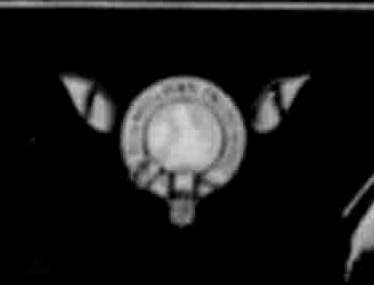
I would really like to identify the chassis and see if there is a PSV Circle chassis list available. The key also is the logo on the side of the vehicle.
Richard Smith
07/08/14 - 06:55
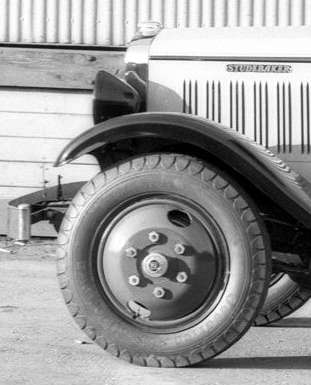
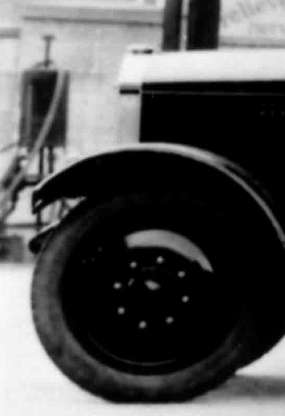
I've been looking on the web for Studebaker vehicles, and found a photo, of a 1931 S-Series bus, and I've blown up the bonnet area. The chrome radiator shape does bear a remarkable resemblance to that of the mystery vehicle.
Chris Hebbron
07/08/14 - 11:16
I have just done a search for Studebaker/Strachan and found a long article in Commercial Motor describing the Rural England Studebaker completed by Strachan & Brown including a number of photos. http://archive.commercialmotor.com/
This is quite different from the coach in question so I think we can now discount Rural England. The Studebaker also seems to have a longer bonnet.
Richard Smith
07/08/14 - 11:42
Could it just possibly be a Lioness PLC?
John Whitaker
07/08/14 - 12:28
6 wheel-nuts/8 wheel-nuts; different size tyres; axle to radiator position. No I don't think they are the same. My immediate thought was Gilford - again because of axle/radiator positioning but I cannot say this with any certainty or absolute knowledge.
David Oldfield
08/08/14 - 05:56
The picture in the Commercial Motor article is the same as that I have in Stan Lockwood's book
David Slater
08/08/14 - 05:59
I am pretty sure that the vehicle shown is not a Studebaker nor a Leyland Lioness, both of which had substantial bonnets housing sizeable six cylinder engines. Another possibility that doesn't fit is the AJS Pilot, itself a derivative of the Star Flyer, which also had a longer bonnet. The set back radiator suggests to me that this coach is an Albion of the Model 26 series, all versions of which were powered by the 30/60hp engine, and which was offered in a range of wheelbase options.
Incidentally, Richard is too modest to mention it, but he has an informative site on Red & White which is well worth a visit at: http://richardsmith.webplus.net/redwhite.html
Roger Cox
09/08/14 - 07:44
I don’t think it is an Albion as the radiator seems a little too rounded. Assuming it has Strachans bodywork there were very few Strachans bodied Albion 26s according to the PSV Circle chassis list and none of them (apart from the R&W ones) were registered to likely companies.
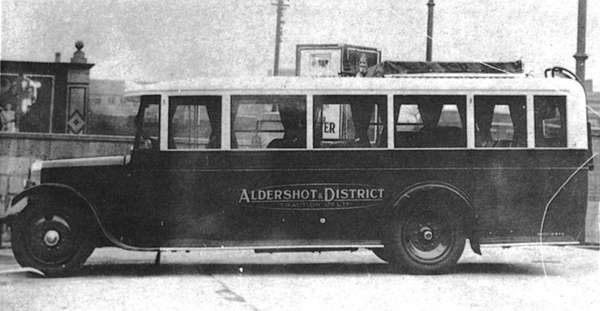
Attached is a photo of a 1928 Strachans bodied Gilford (Bus Fayre Vol 13. No 6, December 1990). Do you think the coach in question could be a Gilford.
I am in the process of updating my website by the way, correcting some errors and adding more photos.
Richard Smith
09/08/14 - 12:36
I was having second thoughts on the radiator thinking it may after all be an Albion and looking through the PSV Circle Albion 26 chassis list I came across a footnote to chassis 5070H:
"The details for this vehicle are not known. However a manufacturer’s photograph of a normal-control Albion vehicle, new in about 1928, with a Strachan & Brown C??D body, displays a ‘Red & White-Rural England’ livery, used at the time by Red & White for some vehicles operating in its subsidiaries, and fleet number 121 – it is possible that this unidentified vehicle was 5070H."
So this is the photograph and problem solved!!
Richard Smith
Comments regarding the above are more than welcome please get in touch via the 'Contact Page' or by email at obp-admin@nwframpton.com
All rights to the design and layout of this website are reserved
Old Bus Photos from Saturday 25th April 2009 to Wednesday 3rd January 2024